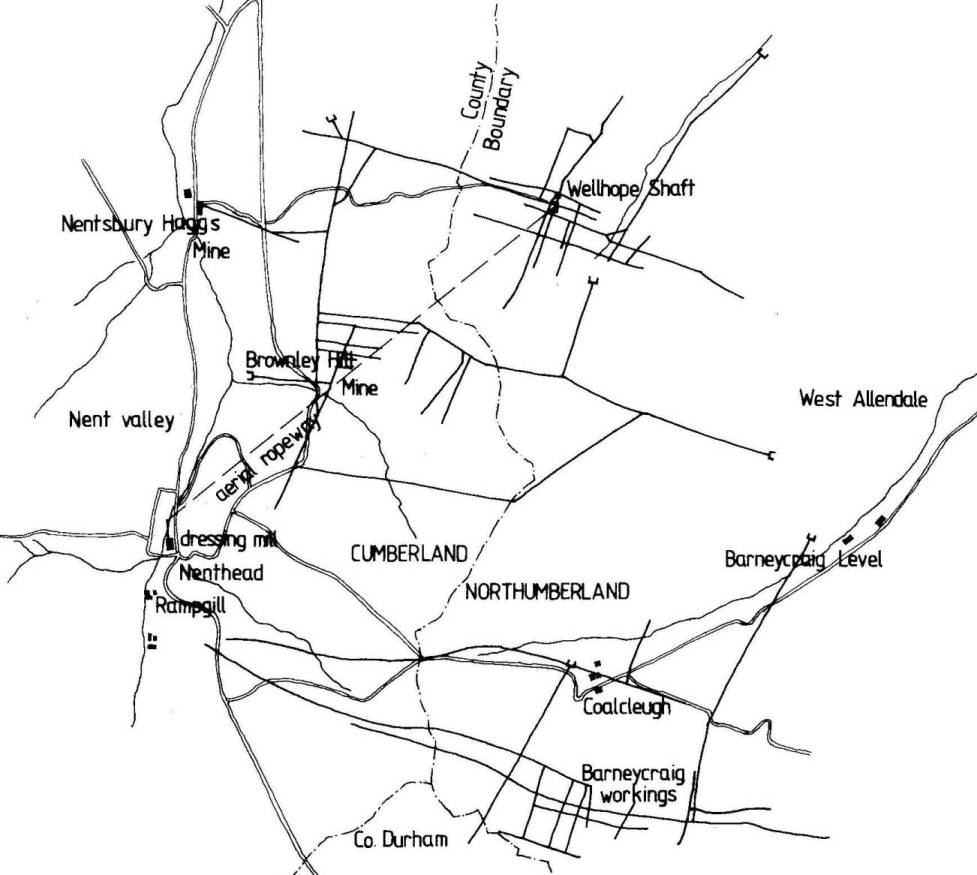The Vieille Montagne
Zinc Mining Company Of Belgium
History
The Societe des Mines et Fonderies de Zinc de la Vieille Montagne company of Belgium, or ‘VM’ for short, came to England in 1896, specifically to the small remote village of Nenthead in the Pennine hills of Cumbria. While in England, this international company survived two world wars and the inter-war economic depression, as well as fluctuations in the geological supply and market demand for zinc and lead. Then in 1949, after fifty-three years of operation, the VM sold its mineral leases, plant and equipment and left.
The Vieille Montagne Zinc Mining Company Of Belgium On Alston Moor
From Roman times until the end of the nineteenth century Alston Moor in Cumbria was famed for the production of lead. For over 180 years from the early 1700’s the leading exponent was the London Lead Company with smaller, locally-based enterprises operating throughout the same period. The industry went into steep decline from the 1860’s onwards due to the decreasing ore reserves, the cost of extraction and foreign competition. In 1882 the London Lead Company sold its interests to the Nenthead and Tynedale Lead and Zinc Company. After initial success, a sharp decrease in the value of zinc and the Earl of Carlisle’s refusal to renew the company’s lease of the spelter works at Tindale Fell, fourteen miles away, led to the company’s failure after a tenure of only fourteen years. The new purchaser of the mineral leases, mines, royalties, mills, works and machinery on Alston Moor in 1896 was the Societe Anonyme des Mines et Fonderies de Zinc de la Vieille-Montagne of Belgium, or VM for short.
From its mines in Nenthead and West Allendale the company obtained zinc ore by mining and by reprocessing old waste dumps from former lead ore extraction, at one time producing 60% of the UK output. In addition, although zinc was the main mineral the company was seeking, any lead found was not discarded, but processed as well. Both ores were not spelted (for zinc) or smelted (for lead), instead they were sorted, crushed and cleaned at Rampgill Mill in Nenthead, then transported by road, rail and sea to the parent plant in Belgium. This was the practice of the company with its mines worldwide.
The establishment of the Vieille Montagne Company at Nenthead was the start of an era of new technology, when previous methods and techniques were replaced by a new dynamism backed by huge financial investment. The VM invested many hundreds of thousands of pounds in the area, it was at the forefront of mining and ore processing technology in Britain and Europe, attracting visitors to the village from a distance to view its plant, it employed hundreds of men of several nationalities, mainly Belgian, German and Italian, and the local economy depended on its success.
In this region of the North Pennines the London Lead Company is rightly famous, revered and written about, but little is known about the Vieille Montagne Zinc Company of Belgium. The proposed anniversary weekend aims to redress the balance in order to promote national and international recognition for the company.
The establishment of the Vieille Montagne Company at Nenthead was the start of an era of new technology, when previous methods and techniques were replaced by a new dynamism backed by huge financial investment. The VM invested many hundreds of thousands of pounds in the area, it was at the forefront of mining and ore processing technology in Britain and Europe, attracting visitors to the village from a distance to view its plant, it employed hundreds of men of several nationalities, mainly Belgian, German and Italian, and the local economy depended on its success.
In this region of the North Pennines the London Lead Company is rightly famous, revered and written about, but little is known about the Vieille Montagne Zinc Company of Belgium. The proposed anniversary weekend aims to redress the balance in order to promote national and international recognition for the company.
Vieille Montagne History

